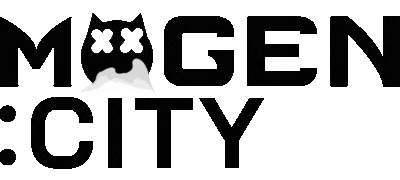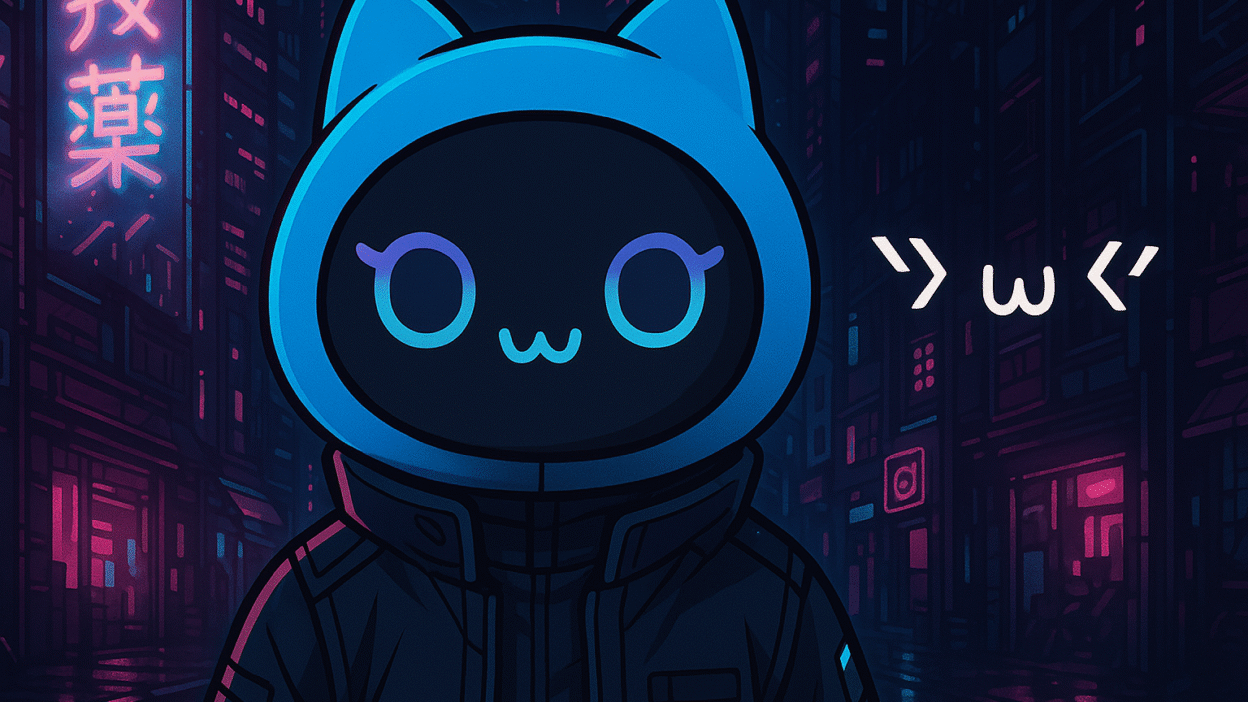It started with a bang – more like an explosion. On May 1, 2025, Boop.fun’s native token $BOOP launched and went straight to the moon (and back) in hours. Picture this: $BOOP opens with a ~$70 million market cap and, within 60 minutes of degenerate FOMO, blasts past $500 million. That’s half a billion in a freaking hour. Even in the anything-goes world of memecoins, this was one for the history books (or the psychiatric case studies). Crypto Twitter was aghast and enthralled – had the degens completely lost their minds, or had we all stumbled into the next Shiba Inu overnight?
For a hot moment, $BOOP was the center of the crypto universe. Bitcoin was teasing $96k, but nobody cared – the real party was on Solana, where Boop.fun turned on the money printer and degens lost their collective heads. Memecoin mania was in full swing, and Boop.fun was leading the charge with a token designed to fuel its cultish ecosystem. The frenzy minted overnight millionaires and bagholders in equal measure. One minute you’re a genius who 10x’d on Boop; the next, you’re that meme of the guy crying behind a mask of euphoria as the price tanks 75%. Yes, after the euphoric top, $BOOP rugged back down 75% (in true meme coin form) almost as quickly as it pumped. But don’t count it out – this story was just beginning.
The $BOOP Rollercoaster: From Zero to $500M to ???
Let’s dissect that wild first day. When $BOOP launched, Solana degens pounced like starved hyenas. Boop.fun had built up serious hype as “Solana’s meme launchpad,” and everyone wanted a piece of the action. Within seconds of listing, buys were flying, FOMO was off the charts. The market cap rocketed from $70M to $500M in one hour. That’s not a pump, that’s a damn detonation. For context, $500M would instantly make $BOOP one of the top Solana ecosystem coins. It was surreal – Boop.fun’s token went from newborn to unicorn in the blink of an eye.
Of course, what goes up in memecoin land must come violently down. By the time most of us degens even heard the news, $BOOP had already round-tripped. After peaking, it nosedived about 75% as early apes took profits and latecomers got rekt. The Telegram chat must have been a mix of champagne pops and anguished screams. Yet, just when you’d think the show was over, $BOOP stabilized and began clawing back. A day later, it was holding around a $388M market cap with $126M in 24h trading volume – still absolutely massive. In other words, $BOOP didn’t die; it planted its flag and said, “I’m here to stay.”
This insane volatility is the calling card of memecoin mania. Boop.fun’s debut encapsulated 2025’s degen market in a nutshell – blink-and-you-miss-it pumps, brutal dumps, but underlying that chaos, a real community and momentum forming. By May 2, $BOOP was trading around ~$0.21 (down from a high of ~$0.49) and showing that it had a heartbeat beyond the initial hype. For the battle-hardened degens, this was a bullish sign: the coin took a heavyweight punch and stayed standing. The message was clear – Boop.fun’s memecoin ecosystem wasn’t a one-and-done gimmick; it had legs (or maybe diamond hands).
Inside the Cult: Why $BOOP Blew Up So Fast
How did a meme token for a brand-new launchpad capture half a billion dollars so fast? Chalk it up to a perfect storm of factors that only come together in peak bull mania:
- Solana Network Effect: Boop.fun launched at the right place, right time. Solana was red-hot with traders thanks to its speed and low fees, and degens were already in a memecoin frenzy on that chain. Boop.fun became the new playground, siphoning attention from older platforms like Pump.fun (its obvious competitor). When word spread that “the PancakeSwap guy made a meme launchpad on Solana,” the apes came running.
- High-Profile Backing: Boop.fun wasn’t some anon dev project – it had Dingaling at the helm, a known NFT whale and investor with cred. And according to reports, a whale dropped a $37.7 million bet on $BOOP right out of the gate. Yeah, you read that right: one wallet aped in with what was equivalent to nearly 2,500 SOL (allegedly worth ~$37M) at launch, treating $BOOP like the next blue chip. With a mega whale and a respected influencer (Dingaling) in the mix, degens felt justified aping blindly. It wasn’t some random meme coin – it was an “insider’s” random meme coin, and that’s catnip to FOMO addicts.
- Tokenomics & Airdrop Hype: Boop.fun’s token wasn’t just floating in isolation; it’s the fuel of the whole cult-building machine. The team made a big song and dance about how 50% of the total $BOOP supply is earmarked for rewarding creators and holders (i.e., the community). Another 15% was set aside for airdrops. So when $BOOP launched, people weren’t just buying a meme; they were buying into an economy. Holding $BOOP means you get a piece of every new cult token that “graduates” (achieves success) on the platform. It’s like owning equity in a degenerate factory – if Boop.fun churns out the next Pepe or Shiba, $BOOP holders reap rewards. This narrative of “hold $BOOP, farm the whole meme ecosystem” drove feverish interest.
- Bubblemaps Trust Factor: Amid the mania, there was a quick check on token integrity – Bubblemaps, an on-chain sleuthing tool, confirmed that the $BOOP distribution matched the published tokenomics (50% rewards, 15% airdrop, 10% team, etc.). In a memecoin launch, seeing that transparency early can pour gasoline on the fire. Degens thought, “okay, at least it’s not a stealth rug, the team isn’t dumping on us… cool, back to gambling.” That trust (however thin) helped keep big money in the game rather than immediately bailing.
- Cult Mechanics and FOMO Loops: The very design of Boop.fun might have added to $BOOP’s explosion. To participate in Boop.fun’s airdrop and rewards, you had to engage – either by starting a cult token or by holding and staking $BOOP. Everyone wanted in on the upcoming airdrop of 150M $BOOP tokens for influencers and traders. But to qualify, you needed to do things like create a cult token on Boop.fun or buy into others. This forced participation created a massive feedback loop: people buy $BOOP to stake and to have skin in the platform, then they also create/join cult tokens to farm airdrops, which in turn often required… holding $BOOP! It’s diabolical and brilliant. By the time $BOOP launched, thousands of degens were chomping at the bit due to platform FOMO – they didn’t want to miss the Boop.fun train because it offered so many ways to win (and admittedly, ways to lose).
So, $BOOP’s face-melting pump wasn’t a fluke – it was engineered by circumstance and design. And importantly, it awakened a cult. After the dust settled, what remained was a hardcore base of Boop.fun true believers (or at least opportunists) who kept pushing the narrative. The token settled around a multi-hundred-million cap, which signaled that Boop.fun might stick around as more than a one-hit wonder.
Degens Turned Cult Leaders: Play-to-Earn, Meme Edition
One of Boop.fun’s craziest innovations is how it turned degens from mere gamblers into active participants – even cult leaders. How? By literally making them launch or promote tokens for rewards. If you aped into $BOOP early, you were probably also connecting your wallet to Boop.fun and firing up a “cult” token of your own to hit those sweet airdrop criteria. Suddenly, thousands of traders became token founders overnight, trying to out-shill each other to graduate their cult and unlock more $BOOP. Memecoin mania went from a spectator sport to an interactive, multiplayer game.
Boop.fun set specific milestones: for example, if your cult token hits a 400 SOL market cap, it “graduates” and you and your community start earning daily $BOOP rewards. It’s like a quest in a video game: reach Level 400 SOL, get the treasure. This gamification turned the degens into goal-seeking missile launchers. Everyone with a cult token was incentivized to pump it to that graduation threshold. And guess what a lot of them likely did with those cult tokens to pump them? Yep, bought them using $BOOP or related Solana liquidity, creating more demand and volume for the whole ecosystem. It’s all one big symbiotic circus: $BOOP pumps cult tokens, cult tokens’ success drives $BOOP demand.
Even those who didn’t create tokens got in on the action. There was a “Trader/Bagholder” airdrop tier for active Solana degens: if you traded certain tokens or held specific NFTs and then bought at least 0.5 SOL of any pre-graduated cult token, you qualified for $BOOP airdrops So of course, an army of airdrop farmers formed, each buying a bunch of random cult tokens just to say they did. It was like an Easter egg hunt for free money. And all of it – every buy of a cult coin, every tweet, every bit of volume – ultimately funneled value to $BOOP, either in hype or in actual trading fees.
This play-to-earn style meta (or should we say shill-to-earn) is new in memecoin land. Boop.fun said: don’t just buy our coin and pray, use our coin to do degen stuff and we’ll reward you for it. The result was an explosion of engagement. Boop.fun’s site required you to sign in with X (Twitter) via Privy to claim rewards, which means thousands of people linked their Twitter – effectively doxxing their social profiles – for a chance at these rewards. The level of buy-in was insane; people don’t do that for a random meme coin. But Boop.fun had managed to convince the herd: we’re all building this wild ecosystem together, so join the cult or be left behind.
Memecoin Season 2025: Boop.fun Sets the Tempo
The broader significance of Boop.fun’s manic launch is how it set the tone for memecoin season 2025. After the $BOOP saga, Solana’s ecosystem was on fire. Boop.fun reportedly helped push Solana DEX volumes past $2 billion a day around its debut, as traders swarmed in to play. It’s like Boop.fun rang the bell and declared “Degen hour has arrived – all chains welcome, but Solana’s where the cool kids at.” The competition, like Pump.fun and others, had to up their game or fade. In fact, Boop.fun’s rapid integration with tools like MEV bots and Solana dexes within 20 hours of launch showed how quickly the ecosystem can adapt. The message to traders was: Boop.fun is here, it’s functional, and you better not blink or you’ll miss the next 100x cult token that spawns here.
Even venture capital and larger investors, who typically roll their eyes at meme coins, had to take note when $BOOP hit nine figures. A lot of them quietly ape under the table (let’s be real), and seeing a structured meme launchpad might have even piqued some “legit” interest. Boop.fun’s approach – combining social media, NFT influencers, and DeFi mechanics – hints at a future where memecoins aren’t just jokes, but a new form of community-driven IPOs. High risk and high cringe at times, sure, but you can’t deny the capital flowing in.
There are risks on the horizon: regulators could wake up and go “WTF is this cult stuff?” The EU, for instance, has been mulling rules that could impact meme tokens and airdrops. If they decide Boop.fun looks too much like a financial Wild West, they might try to rein it in. And of course, meme coin volatility is a double-edged sword – as fast as Boop.fun rose, it could crater if a scandal or exploit hit. But degens don’t want to hear about risks in the middle of a party. The cult of Boop is strong right now.
What’s next? Boop.fun has to show it can sustain this momentum. The initial adrenaline rush of $BOOP’s launch will fade, and then it’s about delivering continuous excitement: new cult tokens that catch fire, maybe some success stories (like a cult coin that goes 1000x and makes headlines), and keeping the rewards flowing so people stick around. They’ve got a staking system where stakers earn 60% of all trading fees and 5% of every new token’s supply – that’s a fat incentive to hold $BOOP long-term and effectively become the “house” taking a cut of this meme casino. If volumes stay high, $BOOP stakers will be grinning all the way to the bank.
In any case, Boop.fun unleashed a new beast in the crypto world. It proved that with the right mix of hype, tech, and degen psychology, a project can go from 0 to $500M faster than most people can microwave a burrito. It’s memecoin mania on steroids, and the degens love it. From here on, whenever we see a meme coin frenzy, we’ll remember the Boop.fun cult epoch that kicked 2025 into overdrive.
The Future: MemeFi Mainstream or Flash in the Pan?
As MemeFi continues to rise, questions abound. Is this sustainable? Are we just dressing up speculation with cute terms like “cult economics”? Possibly. Not every token will survive; in fact, most won’t. We will still see rugs, implosions, and people losing money chasing memes. Boop.fun’s documentation warns users to exercise caution because it’s a wild market. The platform is new, and as with any new financial toy, there will be hiccups and scandals.
However, the genie is out of the bottle. MemeFi is here. Boop.fun’s success is already inspiring copycats and competitors beyond Solana. Ethereum, BSC, others – you can bet teams are now working on Boop-like platforms (if they weren’t already). We might see cross-chain cult tokens, or Boop.fun itself could expand beyond Solana.
One intriguing aspect is whether Boop.fun’s MemeFi model could bridge to something less degen over time. Like, could real projects use this model? Imagine if a startup or an artist launches a token on Boop.fun – essentially gamifying their community growth. The lines between “meme token” and “community token” could blur. Boop’s approach might influence how brands or creators engage with fans via tokenization (minus the outright degenerate tone).
But that’s a maybe. Right now, the focus is on the meta trends among degens: social trading, influencer-led pumps, and community ownership. Boop.fun is setting the bar: if you want the attention of the degen crowd in 2025, you need to offer more than a coin; you need to offer a culture around it. You need memes, competitions, rewards, and a feeling of movement. This is cult economics in action – belief creates value, value reinforces belief.
In summary, Boop.fun is pioneering a MemeFi revolution that’s changing the rules. Degens who adapt to this new meta – by becoming cult leaders or savvy community builders – could reap insane rewards (or at least have a hell of a time trying). Those who stick to the old pump-and-dump playbook might find themselves outmaneuvered in an era where meme communities have more tools and power than ever.
Welcome to Cult Economics 101. Class is in session, and Boop.fun is writing the textbook in real-time. As they say in the memeconomy: LFG – Let’s Form a cult and Go.
Memecoin Mania: Boop.fun’s $500M Solana Frenzy Unleashes the Cult of Degens
The content, Memecoin Mania: Boop.fun’s $500M Solana Frenzy Unleashes the Cult of Degens, published on Mugen:City is for informational and entertainment purposes only.
We do not offer financial advice, investment recommendations, or trading strategies.
Cryptocurrencies, NFTs, and related assets are highly volatile and risky — always DYOR (do your own research) and consult with a professional advisor before making any financial decisions.
Mugen:City, its writers, and affiliates are not responsible for any losses, damages, or financial consequences resulting from your actions.
You are fully responsible for your own moves in the degen world. Stay sharp, stay rebellious.





